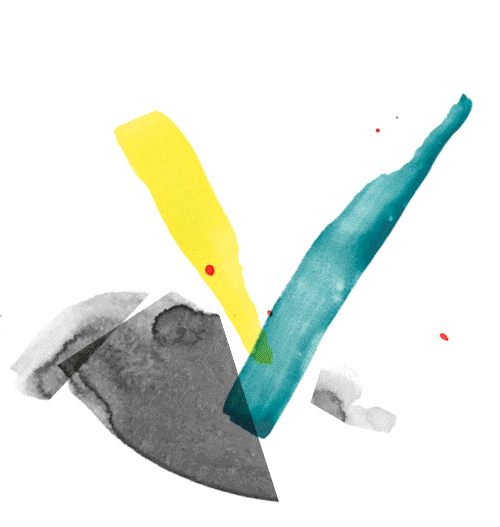

Sign up for our newsletters. You can change the settings or unsubscribe at any time.
Thank you for your subscription. We have sent you an e-mail with a confirmation link.


exp. 1
exp. 2
exp. 3

Galli
Venue: KW Institute for Contemporary Art
Galli
Born 1944 in Heusweiler, DE – lives and works in Berlin, DE
Establishing herself amidst the tumultuous, hedonistic spirit of the West Berlin art scene in the late 1970s and early 1980s, Galli, like many of her contemporaries, rejected the austere visual language of conceptual art and embraced narrative forms and subjective experience. Fragmented objects, human limbs, and amorphous blobs are playfully melded together in her drawings and paintings.
As Thomas Deecke writes, “Her protagonists are figures of her overflowing imagination… they appear to be marked by the circumstances of life and their fates; they show themselves exposed to the injustices of life in often bold gestures and anatomically highly questionable contortions.” Galli’s recalcitrant figures—in the form of severed arms or legs—reveal a semiotic approach to everyday individual experiences, which oscillate between the poles of cheerfulness and horror, struggle and lust, and sexuality/desire and brutality.
Similar stories can also be found in her artist books—art catalogues that she cuts up and paints over, transforming them into unique objects. Galli determinedly blazed her own path within a generation dominated by the (male) painters of the New Fauves. Fundamental to her work are the physical and psychological torment of her figures and her agile intellectual play with literature and language.
In Turbasky (1987) the artist’s own handprints, smeared in red paint, add a macabre dimension to two bodies entwined in what looks like an embrace. The thrashing about of hands and feet in their untitled work from 1989 suggests a scene that could be sexual or violent—or both. The selection of works on display pays homage to an artist, activist, and beloved art professor whose pioneering work and life has not been duly acknowledged within conventional art historical narratives.
Michèle Faguet
Invitation to the Species: Cecilia Vicuña
Tamaas / Cecilia Vicuña
Podcast
A Moment of True Decolonization / Episode #6: Sinthujan Varatharajah. Constructing the Tamil Eelam State
The Funambulist / Sinthujan Varatharajah
Podcast
A World Without Bones
Agustín Pérez Rubio
Weaving Solidarity
Renata Cervetto and Duygu Örs
Q&A
St Sara Kali George
Delaine Le Bas
Soundscape
Undocumented Rumours and Disappearing Acts from Chile
María Berríos
Essay
By using this website you agree to the use of cookies in accordance with our data privacy policy.

Galli
Venue: KW Institute for Contemporary Art
Galli
Born 1944 in Heusweiler, DE – lives and works in Berlin, DE
Establishing herself amidst the tumultuous, hedonistic spirit of the West Berlin art scene in the late 1970s and early 1980s, Galli, like many of her contemporaries, rejected the austere visual language of conceptual art and embraced narrative forms and subjective experience. Fragmented objects, human limbs, and amorphous blobs are playfully melded together in her drawings and paintings.
As Thomas Deecke writes, “Her protagonists are figures of her overflowing imagination… they appear to be marked by the circumstances of life and their fates; they show themselves exposed to the injustices of life in often bold gestures and anatomically highly questionable contortions.” Galli’s recalcitrant figures—in the form of severed arms or legs—reveal a semiotic approach to everyday individual experiences, which oscillate between the poles of cheerfulness and horror, struggle and lust, and sexuality/desire and brutality.
Similar stories can also be found in her artist books—art catalogues that she cuts up and paints over, transforming them into unique objects. Galli determinedly blazed her own path within a generation dominated by the (male) painters of the New Fauves. Fundamental to her work are the physical and psychological torment of her figures and her agile intellectual play with literature and language.
In Turbasky (1987) the artist’s own handprints, smeared in red paint, add a macabre dimension to two bodies entwined in what looks like an embrace. The thrashing about of hands and feet in their untitled work from 1989 suggests a scene that could be sexual or violent—or both. The selection of works on display pays homage to an artist, activist, and beloved art professor whose pioneering work and life has not been duly acknowledged within conventional art historical narratives.
Michèle Faguet
IV: How Fear Can Dismantle a Body. Vis-a-Vis with two of four curators of the 11th Berlin Biennale
María Berríos, Lisette Lagnado
Conversation
Queer Ancient Ways: A Decolonial Exploration
Zairong Xiang
Monograph
St Sara Kali George
Delaine Le Bas
Soundscape
A Moment of True Decolonization / Episode #6: Sinthujan Varatharajah. Constructing the Tamil Eelam State
The Funambulist / Sinthujan Varatharajah
Podcast
Memorial to the Sinti and Roma Victims of National Socialism
Dani Karavan
Memorial
A World Without Bones
Agustín Pérez Rubio
By using this website you agree to the use of cookies in accordance with our data privacy policy.

Galli
Venue: KW Institute for Contemporary Art
Galli
Born 1944 in Heusweiler, DE – lives and works in Berlin, DE
Establishing herself amidst the tumultuous, hedonistic spirit of the West Berlin art scene in the late 1970s and early 1980s, Galli, like many of her contemporaries, rejected the austere visual language of conceptual art and embraced narrative forms and subjective experience. Fragmented objects, human limbs, and amorphous blobs are playfully melded together in her drawings and paintings.
As Thomas Deecke writes, “Her protagonists are figures of her overflowing imagination… they appear to be marked by the circumstances of life and their fates; they show themselves exposed to the injustices of life in often bold gestures and anatomically highly questionable contortions.” Galli’s recalcitrant figures—in the form of severed arms or legs—reveal a semiotic approach to everyday individual experiences, which oscillate between the poles of cheerfulness and horror, struggle and lust, and sexuality/desire and brutality.
Similar stories can also be found in her artist books—art catalogues that she cuts up and paints over, transforming them into unique objects. Galli determinedly blazed her own path within a generation dominated by the (male) painters of the New Fauves. Fundamental to her work are the physical and psychological torment of her figures and her agile intellectual play with literature and language.
In Turbasky (1987) the artist’s own handprints, smeared in red paint, add a macabre dimension to two bodies entwined in what looks like an embrace. The thrashing about of hands and feet in their untitled work from 1989 suggests a scene that could be sexual or violent—or both. The selection of works on display pays homage to an artist, activist, and beloved art professor whose pioneering work and life has not been duly acknowledged within conventional art historical narratives.
Michèle Faguet
O Bailado do Deus Morto
Flávio de Carvalho
Play
Museo de la Solidaridad Salvador Allende (MSSA) in Berlin
A conversation between María Berríos and Melanie Roumiguière
Conversation
Género y colonialidad en busca de claves de lectura y de un vocabulario estratégico descolonial
Rita Segato
Essay
Queer Ancient Ways: A Decolonial Exploration
Zairong Xiang
Monograph
„Klaus Eckschen: Hörspiel“
Die Remise
Hörspiel
Struggle as Culture: The Museum of Solidarity, 1971–73
María Berríos
Essay
By using this website you agree to the use of cookies in accordance with our data privacy policy.

Galli
Venue: KW Institute for Contemporary Art
Galli
Born 1944 in Heusweiler, DE – lives and works in Berlin, DE
Establishing herself amidst the tumultuous, hedonistic spirit of the West Berlin art scene in the late 1970s and early 1980s, Galli, like many of her contemporaries, rejected the austere visual language of conceptual art and embraced narrative forms and subjective experience. Fragmented objects, human limbs, and amorphous blobs are playfully melded together in her drawings and paintings.
As Thomas Deecke writes, “Her protagonists are figures of her overflowing imagination… they appear to be marked by the circumstances of life and their fates; they show themselves exposed to the injustices of life in often bold gestures and anatomically highly questionable contortions.” Galli’s recalcitrant figures—in the form of severed arms or legs—reveal a semiotic approach to everyday individual experiences, which oscillate between the poles of cheerfulness and horror, struggle and lust, and sexuality/desire and brutality.
Similar stories can also be found in her artist books—art catalogues that she cuts up and paints over, transforming them into unique objects. Galli determinedly blazed her own path within a generation dominated by the (male) painters of the New Fauves. Fundamental to her work are the physical and psychological torment of her figures and her agile intellectual play with literature and language.
In Turbasky (1987) the artist’s own handprints, smeared in red paint, add a macabre dimension to two bodies entwined in what looks like an embrace. The thrashing about of hands and feet in their untitled work from 1989 suggests a scene that could be sexual or violent—or both. The selection of works on display pays homage to an artist, activist, and beloved art professor whose pioneering work and life has not been duly acknowledged within conventional art historical narratives.
Michèle Faguet
El primer nueva corónica y buen gobierno
Felipe Guamán Poma de Ayala
Chronicle
Umbilical Cord Amulet
McCord Museum
Object
O Bailado do Deus Morto
Flávio de Carvalho
Play
A World Without Bones
Agustín Pérez Rubio
Touching Feeling. Affect, Pedagogy, Performativity
Eve Kosofsky Sedgwick
Monograph
THE MOBILIZATION
Nicolás Cuello
Text
By using this website you agree to the use of cookies in accordance with our data privacy policy.
By using this website you agree to the use of cookies in accordance with our data privacy policy.




